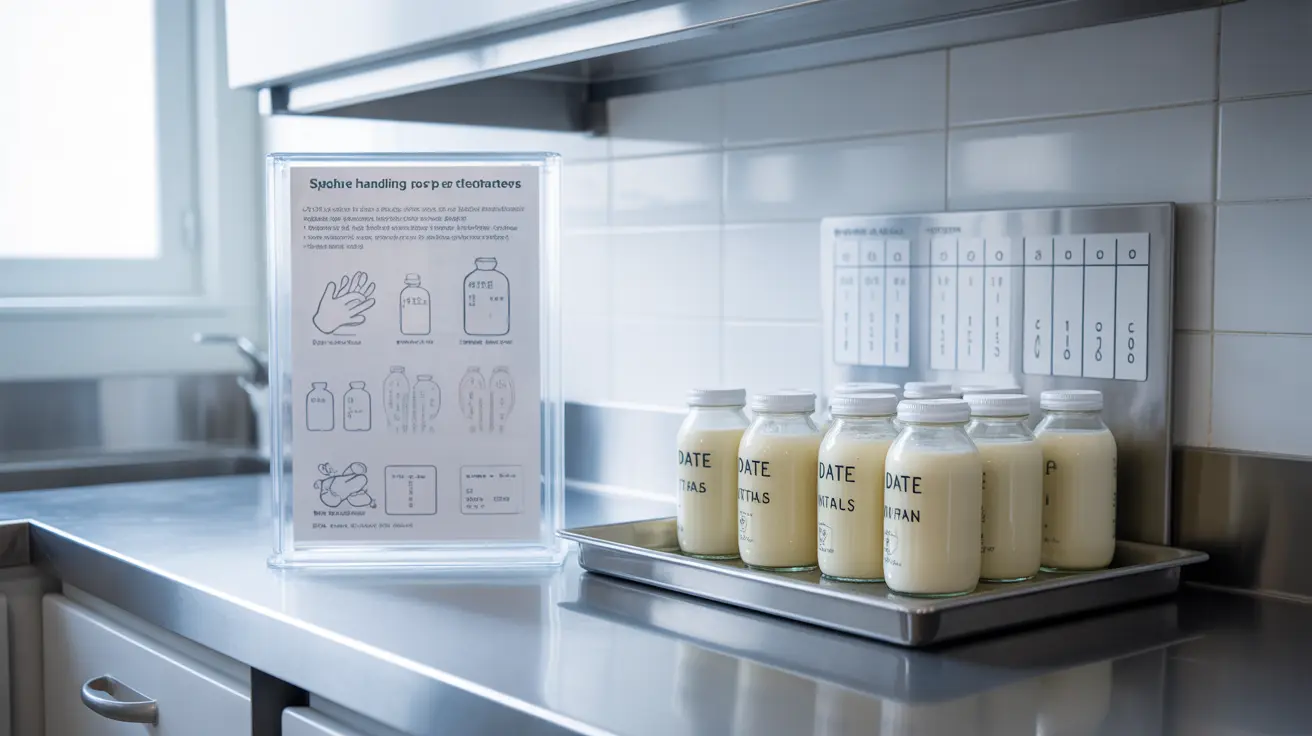Many parents wonder about sharing breast milk between siblings or accepting donor milk for their toddlers, especially when facing supply challenges or welcoming a new baby. While breast milk offers numerous health benefits, sharing it requires careful consideration of safety factors and potential risks.
Understanding the implications of breast milk sharing is crucial for making informed decisions about your toddler's nutrition. Let's explore the safety considerations, risks, and recommended guidelines for breast milk sharing.
Understanding Breast Milk Composition and Benefits
Breast milk composition changes naturally to meet a child's specific needs. When nursing a newborn, the milk contains different nutrients and antibodies compared to milk produced for an older child. This adaptive nature makes it important to understand how shared milk might affect a toddler differently than its intended recipient.
Age-Specific Nutritional Differences
Breast milk produced for a newborn typically contains:
- Higher levels of protein and antibodies
- Different fat content
- Specific immune factors for early development
While toddlers can still benefit from breast milk's nutritional components, their primary nutritional needs should be met through a varied solid food diet.
Safety Concerns with Informal Milk Sharing
The practice of informal milk sharing carries several potential risks that parents should carefully consider before making their decision:
Disease Transmission Risks
Unscreened breast milk may contain:
- Bacterial contamination from improper handling or storage
- Viral infections such as HIV, CMV, or hepatitis
- Medications or substances that could affect the child
Storage and Handling Concerns
Proper milk storage is crucial for safety. Inappropriate handling can lead to:
- Bacterial growth
- Loss of nutritional value
- Contamination from external sources
Safe Alternatives to Informal Milk Sharing
Parents seeking breast milk for their toddlers have several safer alternatives to consider:
Milk Banks and Formal Donation Programs
Human milk banks offer:
- Thoroughly screened donors
- Pasteurized milk
- Safe handling and storage protocols
- Professional oversight and testing
Alternative Nutrition Sources
For toddlers over 12 months, consider:
- Whole cow's milk (if age-appropriate)
- Plant-based alternatives with pediatrician approval
- Focus on nutrient-dense solid foods
Frequently Asked Questions
Is it safe for my toddler to drink breast milk from a new baby or another mother?
While breast milk itself isn't inherently harmful to toddlers, sharing milk informally carries significant risks. The safest option is to use screened and pasteurized milk from certified milk banks if breast milk supplementation is necessary for your toddler.
What are the main health risks of sharing or giving donor breast milk to my child?
The primary risks include potential transmission of infectious diseases, exposure to medications or substances in the donor's system, and bacterial contamination from improper handling or storage. Additionally, unscreened milk may contain harmful contaminants or allergens.
How can I safely use donated breast milk if I can't produce enough myself?
The safest approach is to work with certified milk banks that screen donors and properly process the milk. These organizations follow strict safety protocols, including pasteurization and testing, to ensure the milk's safety.
What should I look for in a breast milk donor to reduce the risk to my child?
If considering donor milk, look for donors who have been medically screened, are willing to share their health history, and follow proper collection and storage guidelines. However, working with certified milk banks remains the safest option.
Are there safer alternatives to informal milk sharing if I can't breastfeed my child?
Yes, safer alternatives include using certified milk banks, consulting with a pediatrician about appropriate milk alternatives for your toddler's age, and focusing on a well-balanced diet of solid foods. For toddlers over 12 months, whole cow's milk may be appropriate with your doctor's approval.




